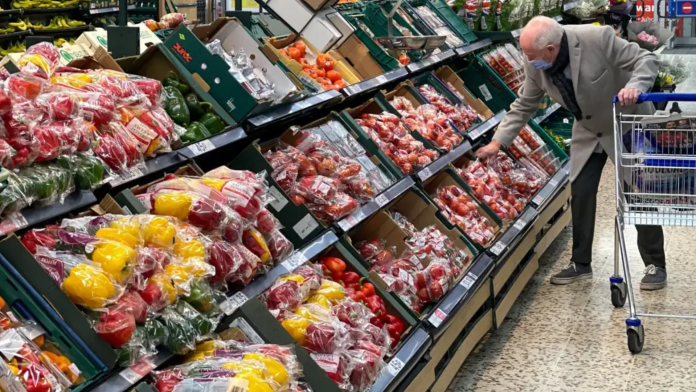In October, UK grocery inflation demonstrated a consistent deceleration for the seventh consecutive month, as revealed by the latest data from the Office for National Statistics (ONS). Despite this ongoing moderation, the inflation rate remained below the double-digit threshold, underscoring a sustained trend of tempered price increases in the grocery sector.
The yearly escalation in prices for food and non-alcoholic beverages, as indicated by both the ONS’ Consumer Price Index (CPI) and the CPI including owner occupiers’ housing costs (CPIH), saw a reduction to 10.1%. This marks the most subdued rate of increase since June 2022.
The Consumer Price Index (CPI) for groceries, encompassing food and soft drinks, experienced a notable decrease of two percentage points when juxtaposed with the rate observed in September (12.1%). Similarly, the CPIH, which incorporates owner occupiers’ housing costs, also saw a decline from 12.2%.
The retraction in inflation could provide a welcomed relief for UK consumers grappling with increased financial pressure due to the impact of interest rate cycles on elevated mortgages and rents. However, it’s essential to note that the October Consumer Prices Index including owner occupiers’ housing costs (CPIH) remained 30% higher than its October 2021 counterpart. The measure had surged to 19.2% in March, reaching a level not observed in over 45 years.
Karen Betts, CEO of the UK’s Food and Drink Federation, welcomed the continued reduction in food costs. However, she also highlighted the challenges faced by industry manufacturers in mitigating the full brunt of inflationary pressures to shield consumers.
She mentioned that these endeavors have “affected manufacturing margins, causing them to decline to their lowest levels in four decades.”
Betts added, “While today’s figures are good news for shoppers, they come at the same time as we are seeing a concerning drop in investment in our industry, with investment in the first half of this year more than a third lower than in the same period four years ago.”
On a less optimistic note, the independent ONS entity reported that food and non-alcoholic beverages played a significant role in driving the overall annual inflation rates for CPIH and CPI in October. Nevertheless, when examining the monthly perspective, they ranked as the second-largest factors contributing to a decrease, following housing and household services.
In October, the Consumer Price Index (CPI) for groceries saw a modest increase of 0.1%, a notable deceleration from the 2% rise observed in October 2022. Although there was a relative slowdown, prices rebounded from a 0.2% decline in September, marking a reversal from the previous month, which, as indicated in the ONS report, was the first drop since September 2021.
Overall headline inflation, encompassing all goods, experienced a decline in October, reaching a two-year low for the Consumer Price Index (CPI). The outlook for the Consumer Prices Index including owner occupiers’ housing costs (CPIH) was slightly less optimistic, touching its lowest point since November 2021.
The Consumer Price Index (CPI) for all goods registered a rate of 4.6% over the 12 months ending in October, reflecting a notable decrease from the 6.7% pace observed in September. Notably, the index had reached its zenith at 11.1% in October 2022, marking the highest annual inflation rate since 1981.
The Office for National Statistics’ Consumer Prices Index including owner occupiers’ housing costs (CPIH) saw a reduction to 4.7%, down from 6.3% in September. This marks a continued retreat from the peak of over 40 years, with the index hitting 9.6% in October of the previous year.
Nicholas Hyett, an analyst at UK-based investment services business Wealth Club, said, “At the headline level at least, these numbers are cause for celebration.
“A substantial fall in inflation should help ease the cost-of-living crisis, while a pause in interest-rate rises will be a huge relief to mortgage holders.”
Within the grocery category – food and soft drinks – the ONS said today (15 November) that nine of the 11 sub-groups provided a downward effect on annual price increases. The two others, oils and fats, and coffee, tea and cocoa, were unchanged.
Milk, cheese, eggs and vegetables helped ease the pressure on shopping costs. However, the inflation rate for milk, cheese and eggs was still 7.9% higher than 12 months earlier, albeit down from 12.3% in September.
Similarly for vegetables, which also includes crisps, the annual rate of increase was 10.8% versus 14.4% in September.


